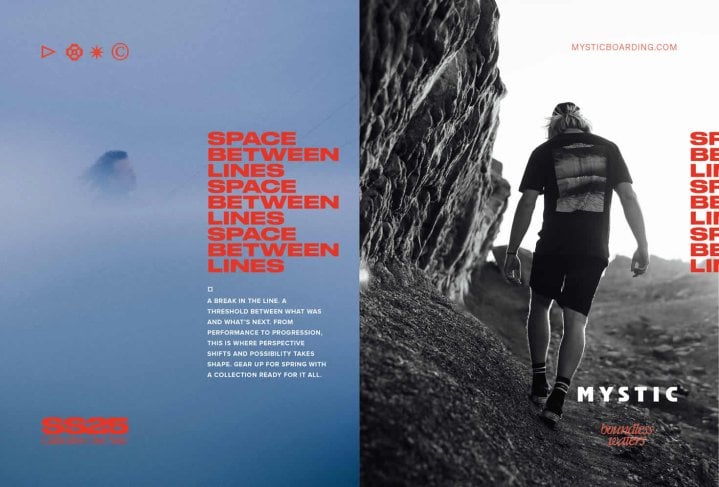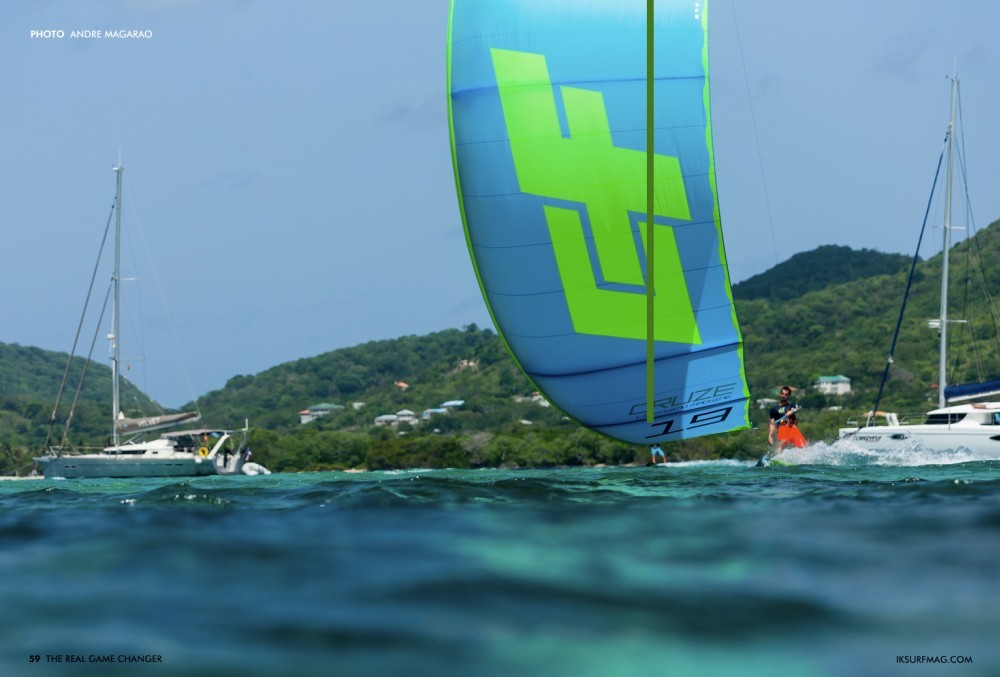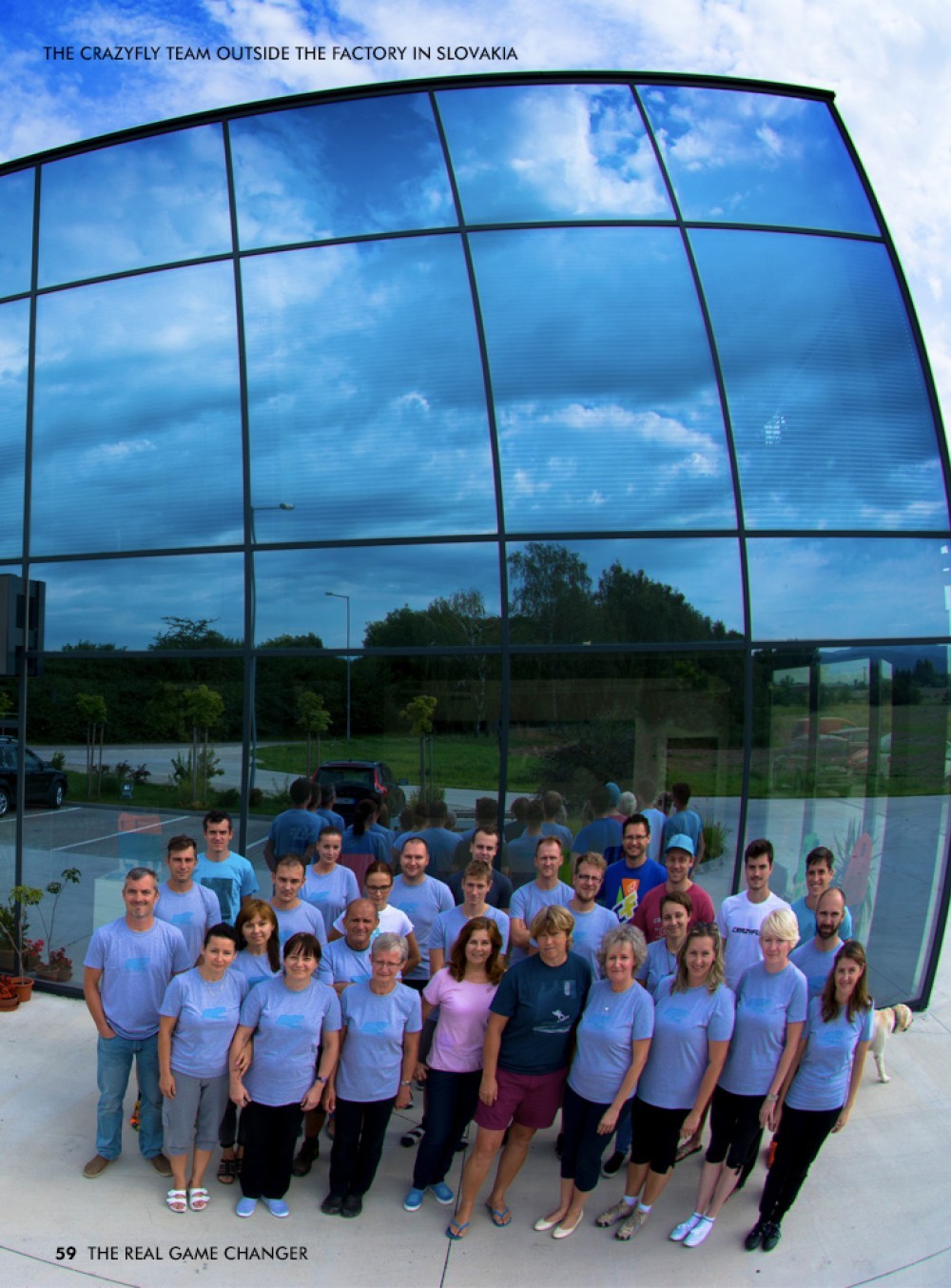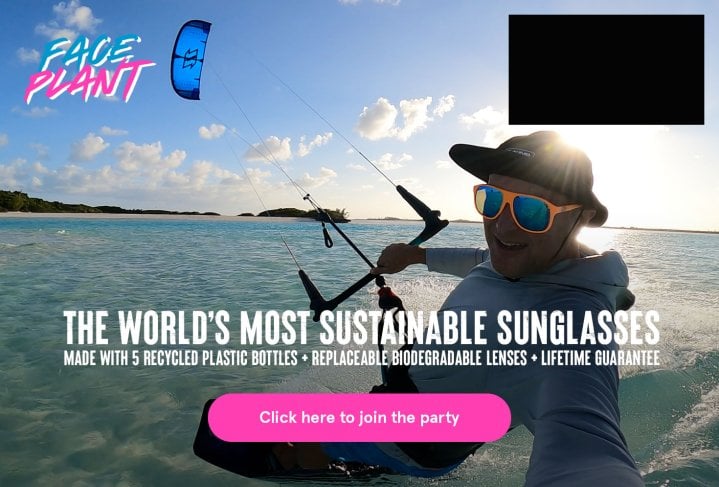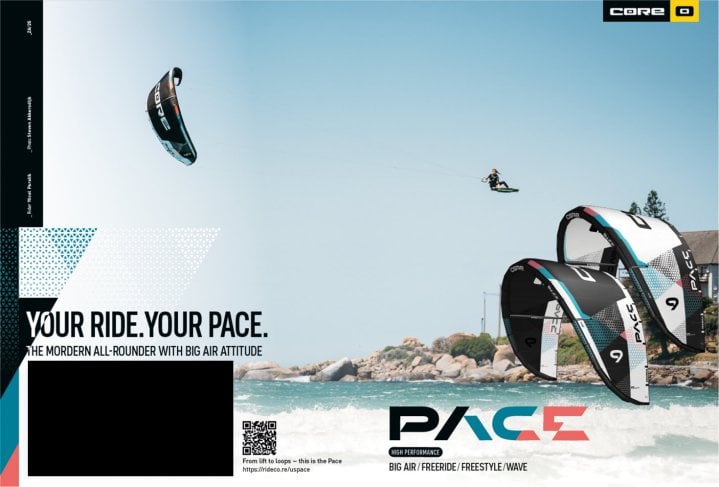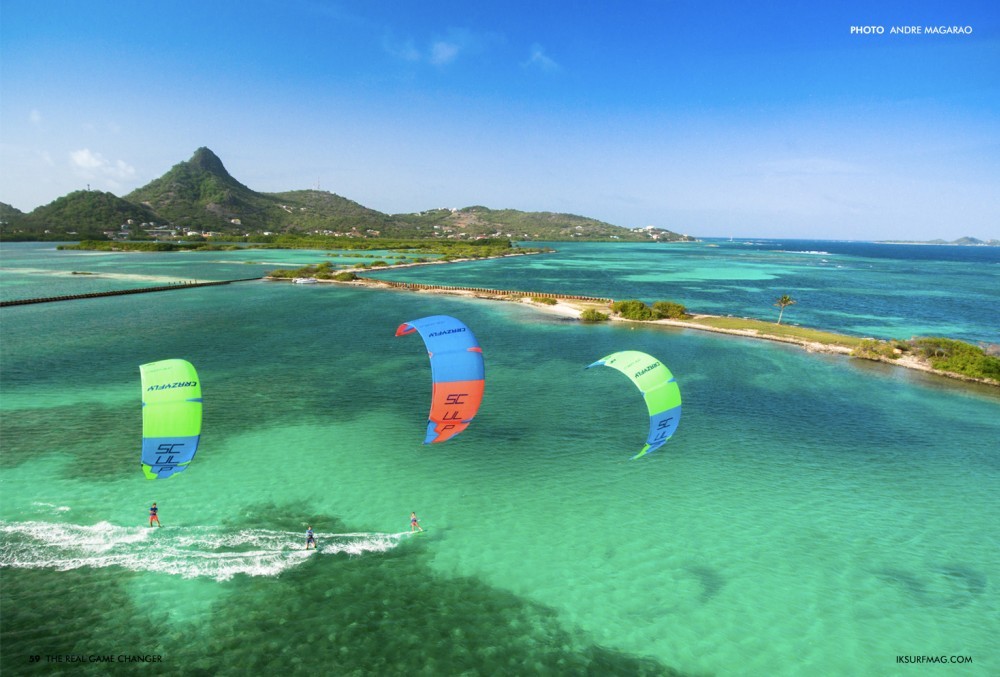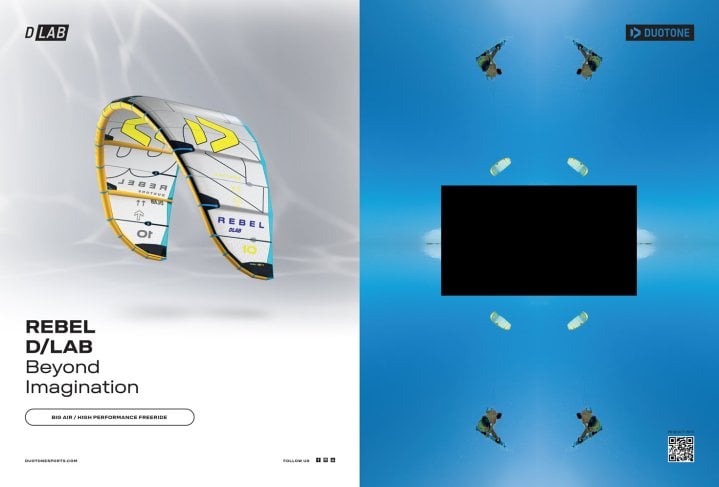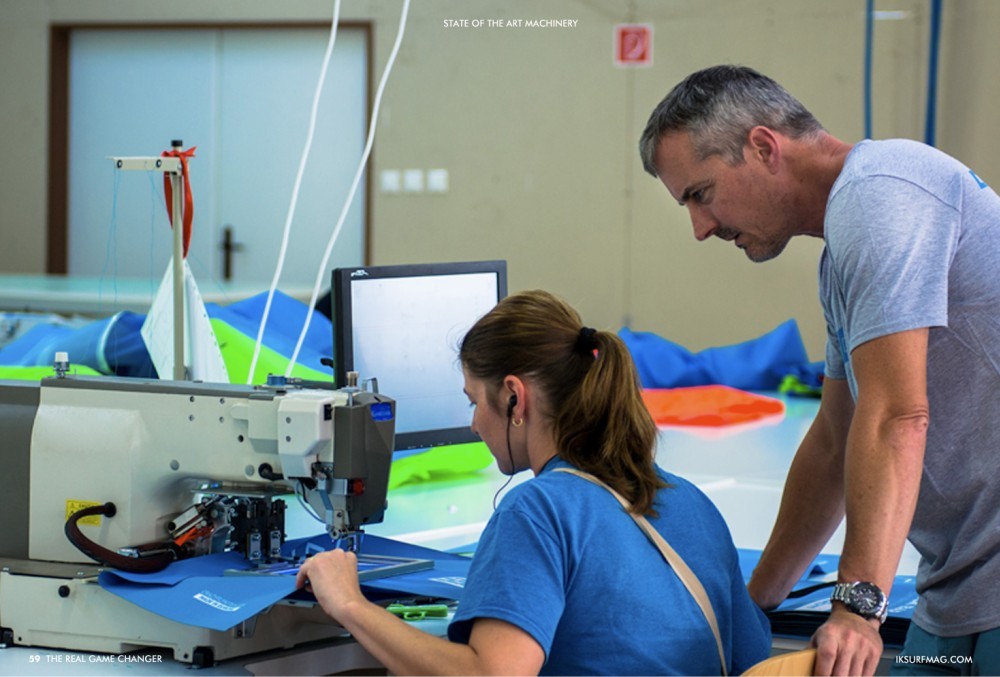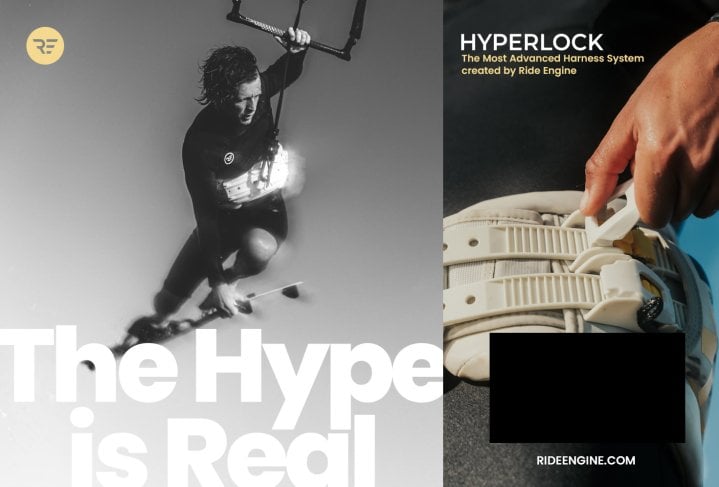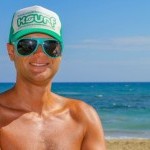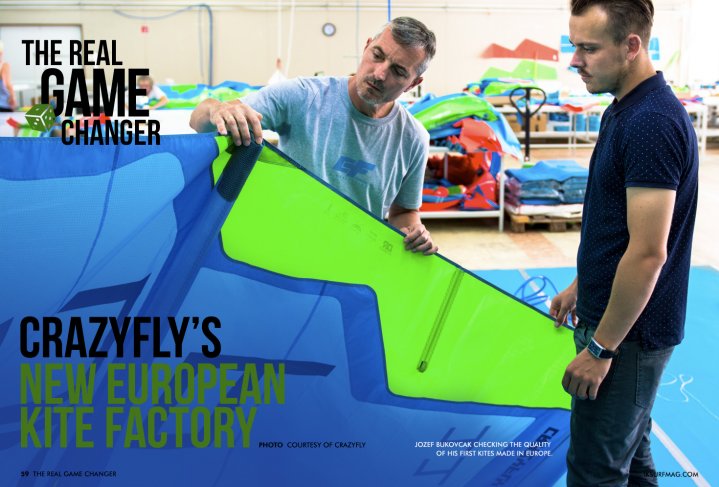
The Real Game Changer - CrazyFly
Issue 59 / Thu 13th Oct, 2016
While not as obviously dramatic as a new way to depower or connect to your kite, a shift to production in the West could have huge ramifications for all of us. Could the first kite factory in Europe change the way we engage with our sport?
Kiteboards have been made in Europe and the USA for years; kites however are a different matter. Aside from small samples and limited batch runs no major kite brand has produced any kites outside of Asia. Lots of companies have moved production facilities away from some of the larger factories, but until now no one has built a new kite factory in Europe from scratch. JozefBukovcak, the owner and director of CrazyFly, had the vision to buck the trend and bring all of his production back to Slovakia…
You’ve been producing boards and your excellent kite bar in Slovakia for years, how long did it take to plan and set up the kite factory, and is it in the same location?
JozefBukovcak: Since we have decided that we are going ahead with our own kite factory, it took us about a year until serial production started. I have been involved with boards production since 1989, so gained plenty of experience with setting up and running a production facility. However, I am not going to say that creating a new kite factory was easy, far from it.
We are lucky that our board production is running at full speed every day. Unfortunately, when we built the board production two years ago, there was not even the slightest thought about producing kites in our own factory. We were not able to fit the kite production in the same building where we make boards, bars and accessories. At the moment, the kite factory is in a rented place which was previously high-end fashion production site. We were lucky because this place has almost all requirements for a kite production site and only a few adjustments for printing were needed. We do plan to build our own space for kite production right next to our board production site.
Who is stitching the kites, did you ship over any specialists from Asia to train staff, how did you build the skills of your team?
All our employees are currently from Slovakia, and we did not bring anyone from Asia to help initiate the production. Everything was managed and set up by our CrazyFly staff. We are lucky that in our region, it is relatively easy to find skilled workers. We are based in the suburb of Trencin, which is also known as the city of fashion in Slovakia. Trencin has a long history of premium fashion production dating back to 1907.
All our sewing staff have more than twenty years of experience in the field. In my opinion, work is not only about good skills. It is about experience, dedication, and passion. We are lucky that we found the right employees that fit with our company culture and are more than just skilled people.
Traditionally the materials are in Asia, which is why the factories have always been there, are you shipping materials from Asia to put together over here or is there another source of canopy material?
You are right, two of the main kite fabrics come from Asia, and we have to import these to Europe. On the other hand, we save money, because we do not have to import finished kites. All in all, it evens out, logistics wise it costs us the same.
The Ripstop fabric we use comes from Japan and Marcloth comes from Taiwan. However, the Dacron we use is from Germany. We have very good relationships with our current kite fabric materials, willing to make custom fabrics for us. I think this will give us an advantage in the future, because when we produced our kites in the Asian factories, we only had limited selection of materials they used. And these were used for other brands too.
What are the advantages for you as a brand in producing kites in Europe?
I would start with faster R&D on kites. We are now able to make prototypes in one or two days, whether it is a new shape or an improvement in construction. With a one-year product cycle, waiting for prototypes from Asia for a month or more was too long. We can now implement new ideas on kites immediately and test them right away. Quality control is also under our supervision nonstop.
Another advantage is that we can work with all materials available, nobody is limiting us to what we can use. With the help of our suppliers, we can also come up with new and unique materials for kites. We will never lose another kite sale due to a lack of stock. Just the same as our boards, all kites will be in stock 365 days a year. End of the year stock leftovers are also minimised. Everything is in our hands, and our goal is to only create the best possible kites available in every single detail.
Plus, personally, I prefer to do things in our factory because producing things is what I love and have done for many years.
What are the advantages for the consumers?
At the moment, much more durable kites, which fly better than ever before. Precisely made with attention to detail at the highest possible quality, using the latest machinery, such as laser cutting and CNC sewing, and high-end fabrics.
By challenging traditional kite construction, we came up with numerous innovations and improvements on the 2017 kites. The kite construction is more rigid, durable, yet lighter. This results in improved flight characteristics. For more information about the improvements of our 2017 kites, please visit our website: http://www.crazyflykites.com we have 22 different elements that now make up our kite tech, too much to list here.
I believe the kites being available 365 days a year is also a benefit for the customer. For the future, we will definitely bring out new shapes and never before used fabrics which should push the kites to another level.
What was the most difficult aspect of the project?
It is hard to pick out one single toughest aspect of the project. But if I have to do so, I would say the hardest part was to decide to go ahead with this. Because, once you start the project and invest in machines, there is no going back. We had to succeed and make good kites ourselves. Otherwise, we would lose everything we invested in this project. Once we started the pressure was on, and it kind of still is. We are only shipping 2017 made in Europe kites out to customers for a month. First feedbacks were positive, but we are still anxious to see what the overall market satisfaction will be with these kites.
Will you produce kites for other brands in the future or is it just CrazyFly, do you see this as the start of a shift towards more locally developed manufacturing in the industry?
At the moment, no. We are very busy with filling our orders and want to focus on improving our own kites and production processes first. Maybe later on, in a year or so, we will consider producing for other brands.
It is tricky to say if this is a shift in the industry. We decided to start our own kite factory, we thought about this long and hard. We put everything on paper, pluses, minuses, risks, etc. In the end, we thought this was the right thing to do for our company under current circumstances. Whether this would work and be a viable option for other brands, I do not dare to answer. It is quite complex, and many factors come into play, and these are strategic decisions. If done wrong, such decisions can put you into real struggle, or out of business completely.
Are there any special techniques that you can employ now you run the factory yourselves?
Of course. If you look at how the kites are constructed and sewn, not much has changed over the past ten years, except for more modern materials. For the past few years, we wanted to change some things on the construction, but getting a factory that makes over thirty thousand kites a year out of their habits is quite a task.
At the same time, we had to consider higher labour costs in Europe, so there were two reasons for looking at the kite construction in detail. Immediately, we could see that the factories were choosing the easier roads in tricky details like the connection of the strut to the canopy, especially the point where the leading edge meets the strut and canopy. Our unique technique is to take no shortcuts, because if you improve a couple of small bits, it results in a significant improvement.
What is the warranty on the kites you produce in Europe?
The warranty conditions did not change, and all kites have a standard one year warranty. Our company has always been focused on quality, so one of our main tasks every day is to have products that will not have warranty issues. We pride ourselves with one of the best customer services in the industry and in many cases we have accepted warranties even after the official warranty period. Just because something is out of the warranty period, we will not turn our back on the customer, and we always try to help out and play fair. Happy customers are always our goal.
Videos
By Rou Chater
Rou has been kiting since the sports inception and has been working as an editor and tester for magazines since 2004. He started IKSURFMAG with his brother in 2006 and has tested hundreds of different kites and travelled all over the world to kitesurf. He's a walking encyclopedia of all things kite and is just as passionate about the sport today as he was when he first started!



